Information – the vital role it plays in efficient irrigation and fertilization.
Farmers all over the world are facing the same challenges in agricultural production:
- Water scarcity.
- Fertilizer – increasing costs and shortages.
- Pesticides – costs, effectiveness and stringent market requirements and standards.
- Climate change – impacting weather patterns; changing patterns of disease and pest occurrence.
- Soil degradation due to past farming practices and impacts of floods, fires etc.
- Increasing labour costs.
- Compliance with international standards such as GAP (Good Agricultural Practices), ISO certification
- (International Organization for Standardization), FSO (Forest Stewardship Council) etc.
- That all seems pretty bleak but what is the solution? Of course there are no simple answers, but modern farmers have a powerful weapon in their toolbox to help control or mitigate those challenges – information.
In previous times, information came in the form of personal experience or wisdom passed from one generation to the next. Old cultural aphorisms were used for weather forecasting – think of ‘red sky at morning – shepherds take warning” etc. until the invention of the printing press, when previously accumulated knowledge from one person or culture became available on a more general basis. Farmers checked wind conditions with a wet finger held aloft and the quality, or dryness, of the soil by crumbling it between their fingers and a good, experienced farmer, could, and still can, learn a great deal in this way. But take a great leap forward to the middle of the 20th century and we see the arrival of the Information Age with the development of the transistor being the trigger that led to modern information systems and internet communication.
In terms of this article, INFORMATION refers to statistics or data that have been processed to provide useful intelligence that can be incorporated into agricultural planning. A challenge is difficult to meet if it has not been identified and, where necessary, quantified. In all of the above examples, changing patterns can only be accurately recognized if there are past and current records that can be integrated with forecasts for planning purposes. The advent of computation, complex algorithms (such as those used in AgriWiz™), Artificial Intelligence and the ability to quickly exchange and share information over networks has brought rapid advances in the farming technology. Particular examples include innovations in irrigation and fertilizer scheduling as described below.
Irrigation:
- Weather stations provide information for weather forecasts and data that can be studied for weather and climate history and patterns. Input can be derived from both national/regional stations and also location specific stations on farms etc.
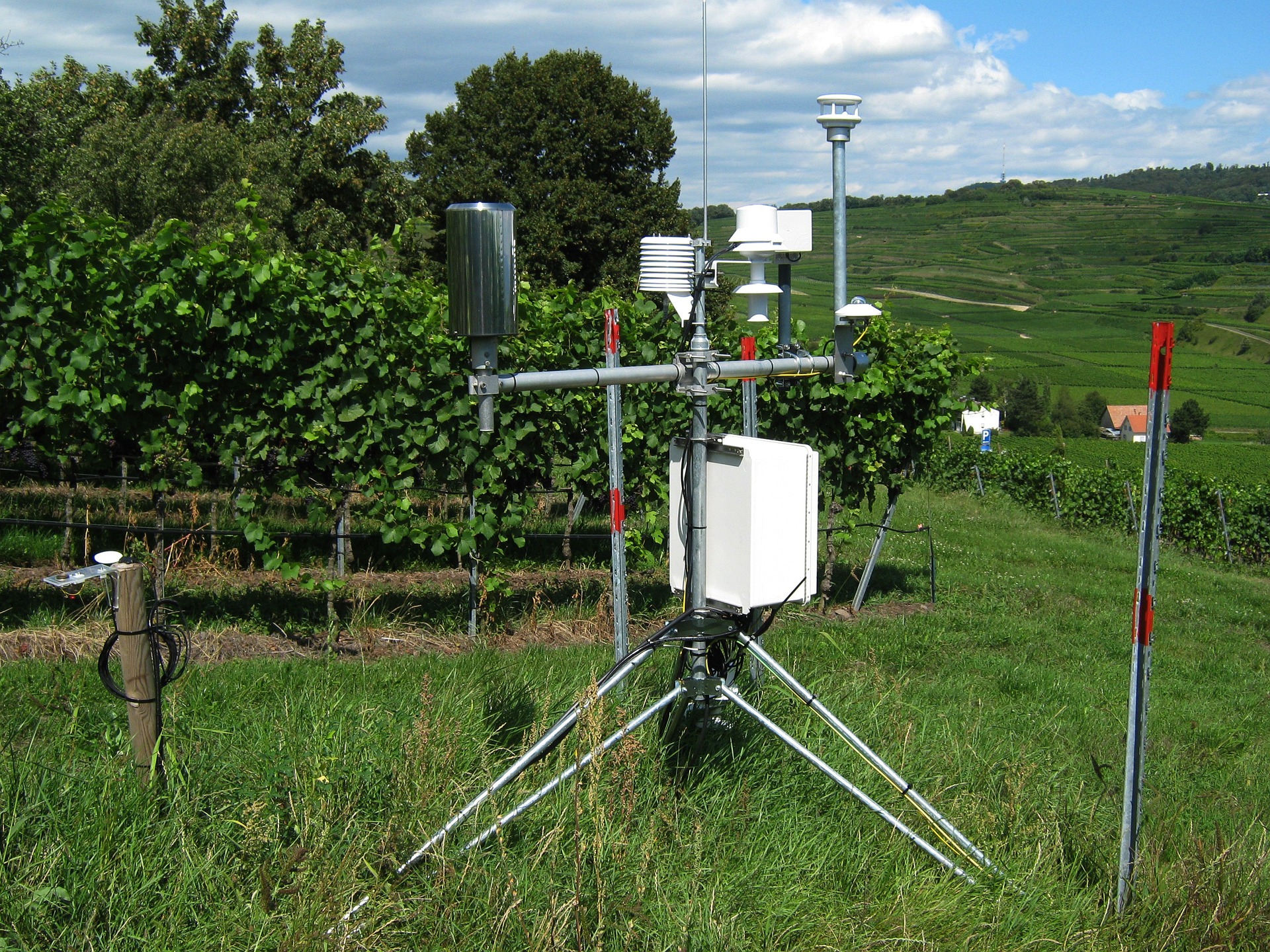
- Field sensors.
- Plant moisture sensors. Examples include stem/trunk diameter sensors, leaf/ canopy reflectance sensors,
thermal imaging, and leaf water potential sensors. These have the disadvantage that measurable
changes in hydration of the plant above surface will probably mean that the roots are already suffering
from water stress. - Soil moisture sensors of various kinds including capacitive sensors, tensiometers, and resistance sensors.
These can give feedback to calculate the percentage of Easily Available Water (%EAW) and allow for
proactive mitigation of dry conditions. - Psychrometers which measure the relative humidity around the plant. This method is indirect, as it
assumes that the amount of water a plant is using is directly related to the relative humidity of the air.
However, the amount of water a plant uses can be influenced by many other factors, such as
temperature, wind speed, and solar radiation, which may not be accounted for by a psychrometer alone.
- Plant moisture sensors. Examples include stem/trunk diameter sensors, leaf/ canopy reflectance sensors,
- Irrigation System
- Controllers
- Flow meters
- Drip flow specifications
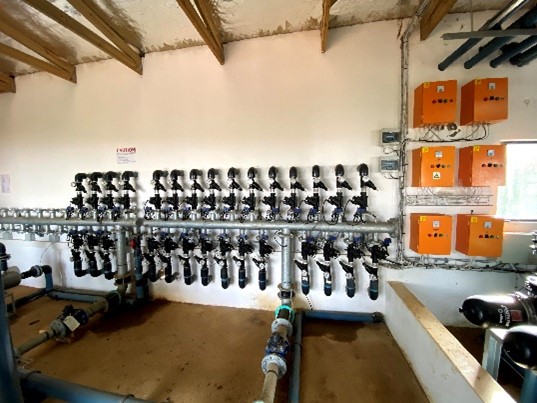
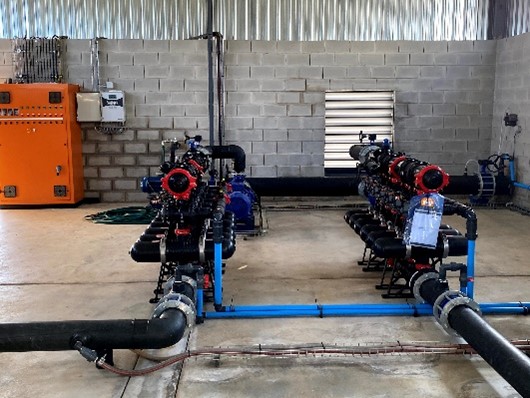
Data from all these possible sources can be utilised to produce precise irrigation schedules, based on past, current, and predicted conditions. Depending on the whether an irrigation system is controlled manually or is fully automated, these schedules are available for implementation or direct input into the irrigation system. By using information of this sort, the farmer can maximise the efficient use of water by applying exactly what is needed, when it is needed, and where it is needed to maintain optimum water balance conditions.
Fertilization:
- Crop Norms- based on crop type and specific cultivar; location; climate; soil type etc Example of a Crop Norm in AgriWiz™ showing Leaf Analysis Norm Ranges.

- Phenology and Crop Growth Stage – expected growth pattern and plant requirements according to the crop norm. Actual growth stage can be monitored by:
- Visual inspection
- Satellite imagery
- Spectral sensors
- Thermal imaging
- Leaf analysis – provides information on the nutritional status of the plant and can be used to recommend changes to fertilizer regimes based on previous results and fertilizer inputs.
- Soil analysis – soil characteristics, organic content and elemental excesses or deficiencies e.g. calcium or zinc will influence fertilizer requirements and mitigation practices.
- Water analysis- high levels of iron or calcium may influence use of certain fertilizers in solution and may contribute to the overall nutritional requirements of the plant.
- Fertilizer prices and availability. Cost per unit of element e.g. nitrogen in simple or compound fertilizers can be a determining factor in the choice of fertilizer and application type.
- Application flow rates and system efficiency – specifically applicable to the different methods of fertigation. Actual administration rates can be compared with recommendation to inform future decisions.
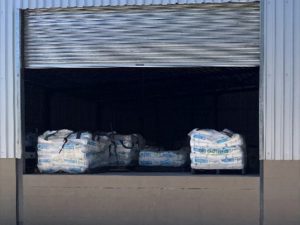
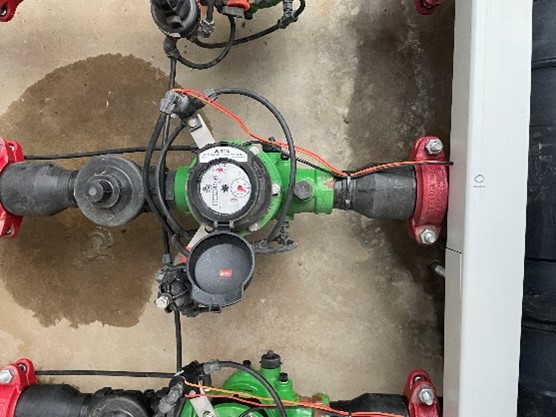
A farmer with access to the above types of figures can make use them to make informed decisions about fertilization. However the vast amount of data generated can create information overload and analysis paralysis. Advanced technological solutions such as the AgriWiz™ program make this easier by incorporating all of the relevant information into complex calculations to produce recommendations for fertilizer scheduling. AgriWiz™ takes all this information and seamlessly converts it into quantified, date time specific recommendations precisely tailored to the specific conditions on the farm. These can be readily updated according to the current needs of the farmer and/or crop. Fully automated systems can integrate the fertilizer requirements with the irrigation scheduling and feed that information back directly to controllers and pump houses. The ongoing challenge for farmers is to maximise outputs while minimising inputs. The effective use of information can help achieve this outcome. AgriWiz™, a forerunner in the intelligent use of agricultural data, is focused on their goal is to assist the modern farmer, agronomist/consultant, to optimise agricultural practices by managing farm production data through the AgriWiz™ cloud-based platform (ML, AI, Big Data and IoT), to provide irrigation and fertigation recommendations to insure higher yields, improved quality, reduced waste, and increased plant efficiency.
